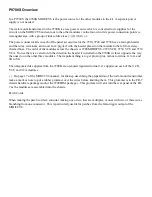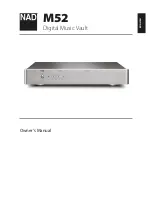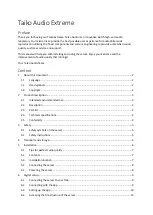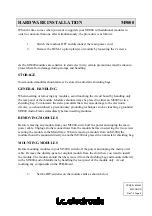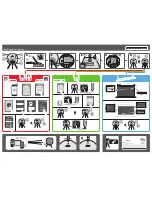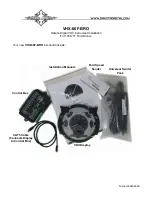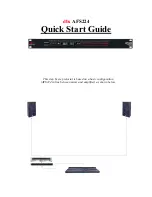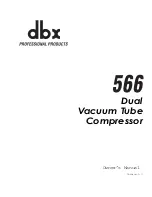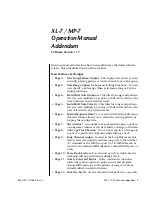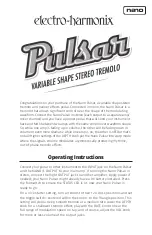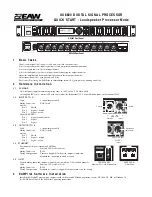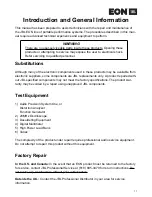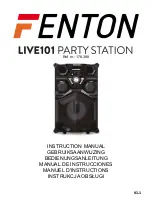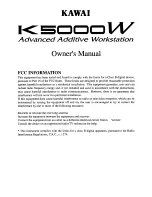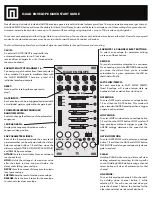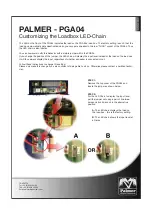
A general, monophonic synthesizer patch:
A common configuration is to start with the vc oscillators as the tone generator, to the L and R VCAs for a mix,
run through the vc filter for emphasis or de-emphasis of parts of that tone, and then through the vc amplifier to
'frame' the sound. On the FatMan, two sawtooth (ramp) waves from the VCOs go to a LowPass VCF and then
to the VCA. Envelope generators modulate the VCF and VCA in response to the Gate trigger which indicates
the key pressed/released state. A Pitch CV amount according to the note pressed sets the VCO pitch.
A simple way to implement this lead, mono synth patch on your P9700S is to make the following connections
(patches). You may need to make some new cords along the way.
First, we'll make the connections from the MIDI2CV8 operating in mode 1 for a mono voice complement of
outputs (power-up with the low note pressed on the MIDI controller and release it a couple of seconds later to
put the pitch cv in the best range). Use a single patch cord to go from the Pitch CV output on the MIDI2CV8 to
the P1 control on VCO A. This allows you to control both oscillators and the Glide control setting can be
adjusted to set the amount of time it takes for the oscillator frequency (pitch) to change for a Pitch CV change.
The Pitch control of each oscillator can be adjusted so they are in unison or other relationship (the rest of the
patch will need to be made to hear this).
A 'Y' cord or one plug with two wires and plugs on it can be used to connect the Gate trigger output from the
MIDI2CV8 to the Gate trigger (G) inputs on the VCF and VCA modules. This will cause their envelope
generator modulators to start when a key is pressed.
Connect the two sawtooth waves from the VCOs to the L and R VCA inputs. The mix of the two waves is set
with the pan control and the L+R output is the output of this mix and goes to VCF A In. We'll take the output
from VCF B LowPass, or the bottom of the six connectors on the right-hand side with the graphic response
symbols. Its best to keep the Q controls at midway or so and the Frequency controls slightly different till you
develop a feel for the way the filter can accentuate or provide a boost on the signal. This boost can kick the
filter into oscillation or overdrive the VCA. The more the Q the more the boost, the less the Q, the less
'dramatic' the filter effect. The more similar the settings of the two series connected filters, the more critical the
Q setting. A cyclic VCF modulation is a neat effect too (instead of just an envelope generator sweep in response
to the Gate). A Gate plus the cycle setting gives a cycle sync'ed to the key presses.
The VCA A section takes the VCF LowPass output with a single patch cord The VCA A output could patch to
a mixer or amp/speaker, etc.
The ADSR controls set the dynamics of the sound as the keys are pressed and the envelope is generated and
'opens' the VCA.
Note the VCO waveform outputs are high level and you may need to set input levels lower than for usual stuff,
or, a special patch cord to attenuate the output can be made. I have one that puts a couple of fixed resistors in
series from the tip to sleeve circuits on the plug at 9700 end of the cable and the signal is tapped at the junction
of the resistors for a more typical 'line-level'. The two resistors are a 10k and a 1k and the 10k attaches a the tip
and the 1k at the sleeve. The tap for the signal that wires on to the tip of the plug for the mixer, amp/speaker, etc
is from the junction of the two resistors. The ground circuit is as usual--sleeve terminal to sleeve terminal. The
reason its needed here but not on module to module patches is that the modules all share a ground already--the
power supply ground circuit--but the synth and the external device don't until one connection is made between
them establishing a common ground.

